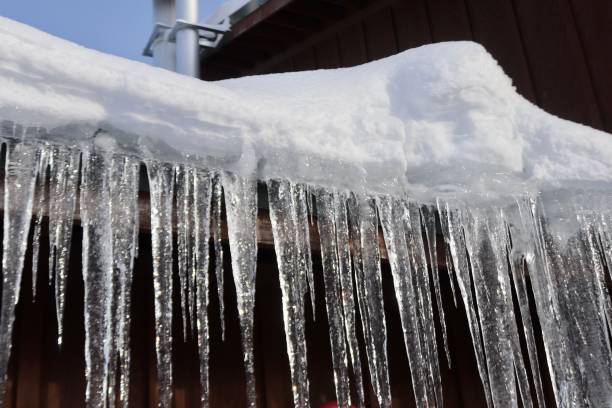Were you interested in advise concerning Winter Plumbing Precautions: Preventing Frozen Pipes?

Cold weather can ruin your pipes, specifically by freezing pipelines. Below's exactly how to prevent it from occurring and what to do if it does.
Intro
As temperature levels decrease, the threat of icy pipes rises, potentially leading to pricey repair work and water damages. Comprehending how to avoid icy pipelines is important for homeowners in chilly environments.
Prevention Tips
Protecting vulnerable pipes
Cover pipelines in insulation sleeves or use warm tape to shield them from freezing temperatures. Concentrate on pipelines in unheated or exterior areas of the home.
Heating methods
Maintain indoor spaces sufficiently heated up, specifically areas with plumbing. Open cupboard doors to enable cozy air to distribute around pipelines under sinks.
Exactly how to recognize icy pipelines
Look for lowered water flow from faucets, unusual smells or sounds from pipelines, and noticeable frost on revealed pipelines.
Long-Term Solutions
Architectural modifications
Take into consideration rerouting pipelines far from outside wall surfaces or unheated locations. Add additional insulation to attics, basements, and crawl spaces.
Updating insulation
Buy high-quality insulation for pipelines, attic rooms, and walls. Proper insulation aids keep consistent temperature levels and minimizes the risk of icy pipelines.
Safeguarding Exterior Pipes
Garden tubes and outside faucets
Separate and drain yard pipes before wintertime. Install frost-proof faucets or cover outdoor taps with shielded caps.
Recognizing Frozen Pipelines
What creates pipes to ice up?
Pipelines freeze when revealed to temperatures below 32 ° F (0 ° C) for prolonged periods. As water inside the pipes freezes, it broadens, taxing the pipeline wall surfaces and possibly creating them to break.
Risks and damages
Frozen pipes can result in water system disturbances, property damage, and expensive repairs. Ruptured pipelines can flooding homes and trigger comprehensive structural damage.
Indicators of Frozen Pipeline
Identifying frozen pipes early can avoid them from bursting.
What to Do If Your Pipelines Freeze
Immediate actions to take
If you presume icy pipelines, maintain faucets available to soothe stress as the ice thaws. Use a hairdryer or towels taken in warm water to thaw pipelines gradually.
Verdict
Avoiding frozen pipes needs positive actions and fast feedbacks. By recognizing the reasons, indications, and safety nets, house owners can protect their pipes throughout cold weather.
5 Ways to Prevent Frozen Pipes
Drain Outdoor Faucets and Disconnect Hoses
First, close the shut-off valve that controls the flow of water in the pipe to your outdoor faucet. Then, head outside to disconnect and drain your hose and open the outdoor faucet to allow the water to completely drain out of the line. Turn off the faucet when done. Finally, head back to the shut-off valve and drain the remaining water inside the pipe into a bucket or container. Additionally, if you have a home irrigation system, you should consider hiring an expert to clear the system of water each year.
Insulate Pipes
One of the best and most cost-effective methods for preventing frozen water pipes is to wrap your pipes with insulation. This is especially important for areas in your home that aren’t exposed to heat, such as an attic. We suggest using foam sleeves, which can typically be found at your local hardware store.
Keep Heat Running at 65
Your pipes are located inside your walls, and the temperature there is much colder than the rest of the house. To prevent your pipes from freezing, The Insurance Information Institute suggests that you keep your home heated to at least 65 degrees, even when traveling. You may want to invest in smart devices that can keep an eye on the temperature in your home while you’re away.
Leave Water Dripping
Moving water — even a small trickle — can prevent ice from forming inside your pipes. When freezing temps are imminent, start a drip of water from all faucets that serve exposed pipes. Leaving a few faucets running will also help relieve pressure inside the pipes and help prevent a rupture if the water inside freezes.
Open Cupboard Doors
Warm your kitchen and bathroom pipes by opening cupboards and vanities. You should also leave your interior doors ajar to help warm air circulate evenly throughout your home.

Do you like reading up on How to prepare your home plumbing for winter weather? Place a short review further down. We would be pleased to find out your responses about this blog posting. Hoping to see you back again later on. Those who enjoyed our article if you please make sure you remember to pass it around. Thanks for taking the time to read it.
Schedule Now!
Comments on “Avoid Frozen Pipes in Cold Weather: Pro Strategies”